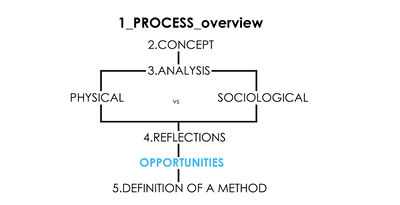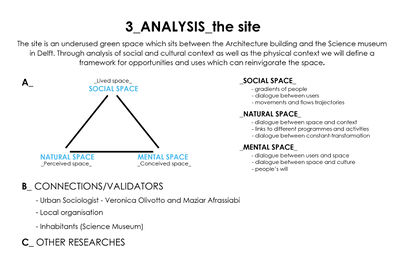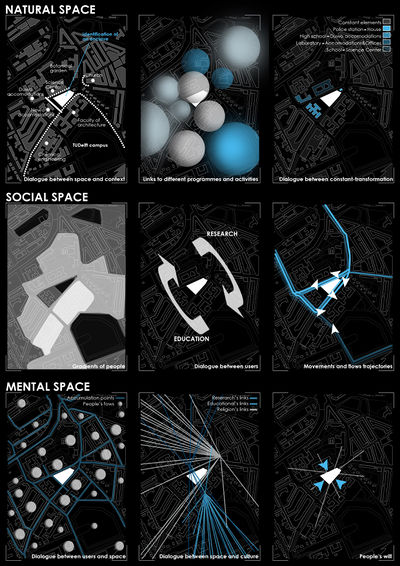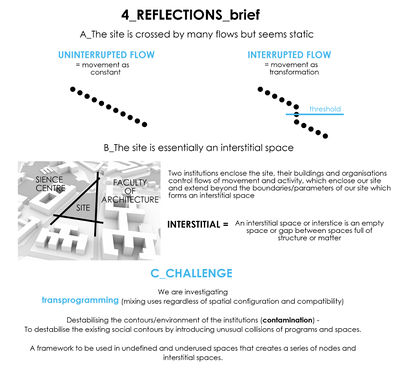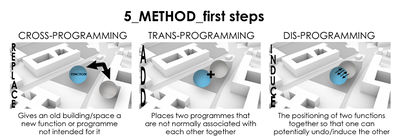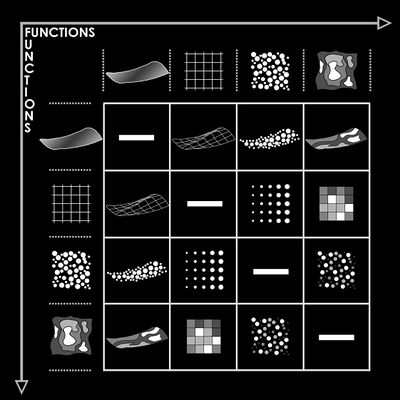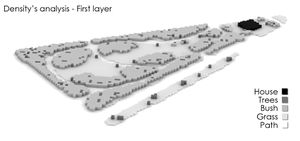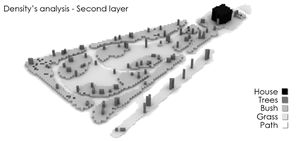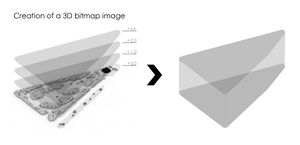atom10:CONCEPT-CHALLENGE
| Line 67: | Line 67: | ||
Mapping density of elements in the park. By mapping density we can create a gradient of possibilities. The density will indicate what is accessible and will fluctuate according to the season. This denisty will map the site plan and indicate where the intervention can form. | Mapping density of elements in the park. By mapping density we can create a gradient of possibilities. The density will indicate what is accessible and will fluctuate according to the season. This denisty will map the site plan and indicate where the intervention can form. | ||
| + | |||
| + | <gallery widths="150" heights="100" perrow="3" > | ||
| + | |||
| + | Image:Bitmap.jpg|AAA | ||
| + | |||
| + | Image:Bit2.jpg|BBB | ||
| + | |||
| + | Image:Layers.jpg|CCC | ||
| + | |||
| + | </gallery> | ||
| + | |||
Revision as of 10:17, 25 September 2011
Contents |
Analysis
“Architecture is a combination of Space, Events and Movement without any hierarchy” (Bernard Tschumi)
_The concepts of cross/trans/dis-programming will allow for a flow of dialogue by emphasizing transformation, adaptation and movement in design. _Trans-programming can produce a path for urban interchange. The unexpected interaction resulting from this is the challenge. _Dialogue between form and function results in spaces of urban interchange. In this way the flow of dialogue is not only increased between the different users of the space/building, but also between the users and the space/building/urban sourranding.
Now we want to create a description of our purposed/imaginery activities, exploring how they would use the site and what sort of structure they requires. At the same time we want to develop a matrix or diagram representing the different possible uses of space.
Work in progress
Matrix of imaginery uses
- Oral history museum
- Bar/Nightclub
- Botanical garden
- DMT vending machines*
- Bicycle lock/shelter
- Playground
- Library
- Sushi restaurant
- Gym
- 24 hour shop
- Japanese tea house
- Petrol station
Client: people moving through the space
Challenge: disrupting the monoculture of the institutions
Intervention: auxiliary uses which break the rhythm of movement and the contours of the institutions
three methods define the intervention:
The intervention will be responsive to the different proposed uses. Optimisation will occur between conflicting uses, existing movement and rhythm and the density constraints of the site.
- Site analysis
Mapping density of elements in the park. By mapping density we can create a gradient of possibilities. The density will indicate what is accessible and will fluctuate according to the season. This denisty will map the site plan and indicate where the intervention can form.
- Rhythm analysis
The surrounding institutions control the rhythm of movement and activity surrounding and extending beyond the site. We need to map and represent the contours of the flow of people around the site. This analysis will help us to define where the intervention can engage with users.
- Imagined use analysis
Imagining activities and their requirements to create a matrix of characteristics which can be compared and contrasted. Allowing us to analyse how different uses can interact and inform other uses and forms. What is the reaction of uses? How do they disrupt the existing flows and rhythms?
Validators
We have spoken to and will interview two urban sociologist's Veronica Olivotto and Maziar Afrassiabi to find out about sociological research methods and to discuss the most recent research conducted in Delft.
www.statline.cbs.nl
www.funda.nl/buurtinfo
www.cos.nl
www.delft.buurtmonitor.nl/
Belangenvereniging TU Noord proposed a brief for the connection of the green spaces in Delft.
